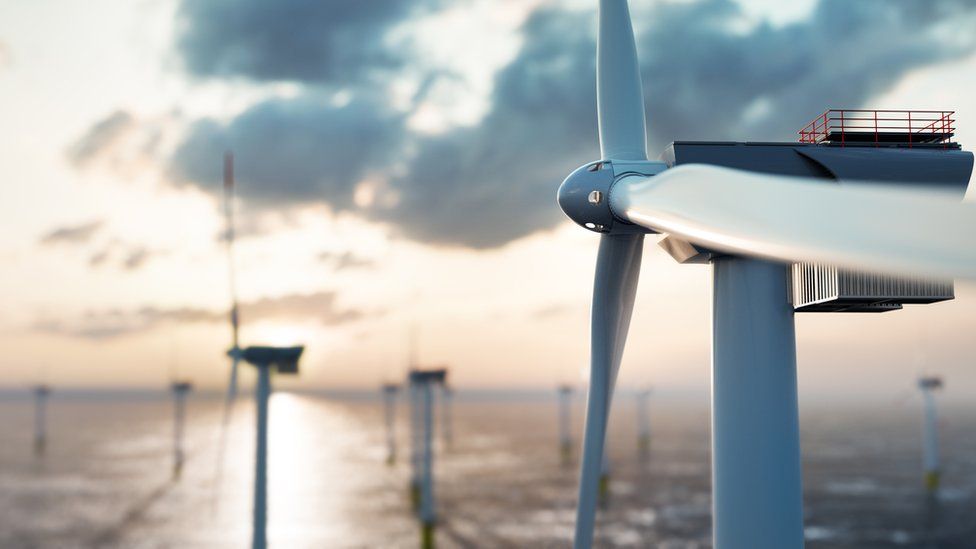With 17 new wind farm projects planned for Scotland, the UK’s offshore wind power capacity is set to more than double.
But what happens when the wind is blowing, the turbines are cranking out electricity and there’s no demand for it?
It’s already a problem. In 2020, enough electricity to supply more than one million homes was wasted due to a lack of storage, according to a report by KPMG that was commissioned by the power company Drax.
But one firm, which won a 2022 Best of Innovation award at the CES technology show earlier this year, believes it has the solution.
Dutch startup, Ocean Grazer, has developed the Ocean Battery, which stores energy below the wind farm.
When there is excess electricity the system pumps water from an underground reservoir into tough, flexible bladders that sit on the sea bed. You could think of them like big bicycle inner tubes.

The water in those tubes is under pressure, so when it is released the water flows quickly and is directed through turbines, also on the sea bed, generating electricity when needed.
“The Ocean Battery, is effectively based on the same technology as hydro storage, where water is pumped back through a dam in a river, though we have transformed it into something you can deploy on the sea bed,” says chief executive Frits Bliek.
A protoype designed for deep water has already been tested at the port of Groningen in the Netherlands. The firm is now preparing to test a second system that has been modified for shallower water in a lake in the northern Netherlands. This should be operational next year.
Many on-shore wind farms already use batteries to store extra power but there are a number of problems when it comes to using these offshore.
“If you want to build a large-scale system offshore, you would also need to build a really huge platform built of sea containers and that’s been found to be very, very costly. Also the lifetime of the batteries is not very long,” says Mr Bliek.

While lithium-ion batteries can last for 5,000-10,000 charging cycles, the Ocean Battery can take up to a million, he says. Though the cost of storage is roughly the same, this extended life makes it much cheaper overall.
“We found it can be built in shallow waters everywhere where wind farms are being built, and that’s also pretty cost-effective at the end of the day,” says Mr Bliek.
He also thinks the technology can be used alongside solar farms, if there is a lake nearby.


Dr Gavin Harper, Faraday Institution research fellow at Birmingham University, says the future of energy storage is likely to involve a mix of different techniques.
“Different energy storage technologies are suitable for storing energy on different time scales. Some are better suited for very fast responsive energy storage and others are suited to longer-term energy storage.”
“One of the real advantages with this type of technology is it eliminates the use of critical materials – for example, cobalt, nickel and lithium – which are key technology metals used in the manufacture of lithium-ion batteries.”
Such materials are expensive and in short supply.

But there are concerns about the financial viability of the system, says reader in energy systems and policy, Dr Jonathan Radcliffe, who is also at Birmingham University.
“In principle, the technology is aiming to store large amounts of energy over periods of many hours, days or weeks. The problem that a lot of energy storage technologies face is that the value of storing energy at that scale is not high in the current market, so it would take a long time to pay back.”
Land-based battery storage is more useful to power firms as it can be used to handle other problems with the grid, such as when power lines are near their limits, he says.
“Those applications are quite highly valued and need storage over short periods of time, so quite a few projects are proving to be commercial.”
Last year, the UK government launched a competition to come up with innovative energy storage solutions, with up to £68m ($93m) available in capital funding. Projects are expected to include electric, thermal and power-to-x, which involves using electricity to create hydrogen or synthetic fuels.


























